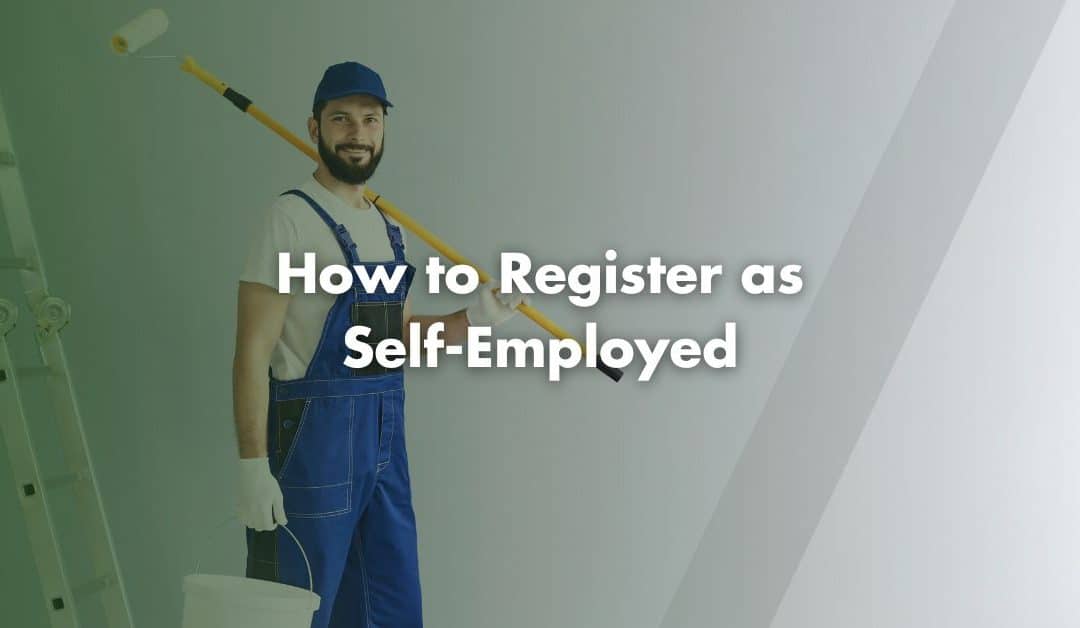Whether you are launching a freelance career or building a full-time business, the first step is to register as Self-Employed with HMRC. This makes sure you declare your income properly and that you meet all legal obligations.
What Does It Mean to Be Self Employed?
Being self-employed means working for yourself rather than being employed by someone else. You are in control of how, when and where you work.
You are likely to be self-employed if you:
- Provide services to multiple clients
- Set your own rates and working hours
- Get paid per job or project
- Provide your own tools or materials
- Bear the risks and rewards of your business
- Take full responsibility for completing the work
Self-employed people include freelancers, contractors, tradespeople and business owners. If any of the above applies, you should consider registering.
Who Needs to Register as Self-Employed?
You must register with HMRC if:
- You earn over £1,000 from self-employment in a tax year
- You want to pay Voluntary National Insurance Contributions
- You need to prove self-employment status (for benefits such as Tax-Free Childcare)
- You work in construction and need to register for the Construction Industry Scheme (CIS)
Even if you already complete a tax return for another reason, such as rental income, you must still register separately as self-employed.
When Should You Register as Self-Employed?
You need to register by 5th October in your second tax year of trading. For example: If you are trading in August 2024, you must register by 5 October 2025.
How to Register as Self-Employed
1. Set Up a Government Gateway Account
Go to the HMRC website and create a Government Gateway Account. This account lets you access HMRC’s online services securely. Use a reliable email address, as you will need it during the process.
2. Register for Self Assessment
After logging in:
- Select “Self Assessment”
- Choose “Sole Trader” as your business type
- Enter your name, National Insurance Number, address and business details
- Provide your business start date
HMRC will then send you a Unique Taxpayer Reference (UTR) by post. They use this 10-digit number to identify your tax records. You should receive your UTR within 10 working days, unless abroad which may take longer. Most importantly, keep the UTR somewhere safe.
Already Registered Before?
If you have previously filed a tax return, you do not need to register again from scratch. Use your existing UTR and submit the CWF1 Form to let HMRC know you are now self-employed.
Working in Construction?
If you work as a subcontractor in the construction industry, you must register for the Construction Industry Scheme (CIS). Registering ensures HMRC taxes you at 20% rather than 30%. This simple step makes a big difference to your take-home income.
What Happens After Registration?
Once you have registered, HMRC will:
- Send your UTR and an activation code
- Set up your Self Assessment account
- Notify you of upcoming deadlines
Your responsibilities include:
- Filing a tax return each year
- Paying Income Tax and National Insurance
- Keeping clear records
Tax Responsibilities for the Self-Employed
You will need to:
- File your Self Assessment tax return online by 31st January
- Pay your tax bill by 31st January (and possibly another by 31st July)
- Pay Class 4 National Insurance if profits exceed £12,570
From April 2024, you no longer need to pay Class 2 National Insurance if your profits are over £6,725. If your profits fall below this, you can make voluntary contributions to protect your record for State Pension purposes.
Business Name and Business Insurance
You can trade under your own name or choose a business name. If you choose a specific name:
- Ensure it is not already in use
- Avoid misleading or restricted terms
- Check domain availability if building a website
You do not always need insurance, but it can offer must-have protection. The most common types of insurance include:
- Public Liability Insurance which covers injury or property damage claims
- Professional Indemnity Insurance which covers claims for professional mistakes
- Employers Liability Insurance which is a legal requirement if you hire staff
Stopping Self-Employment
If you decide to stop trading:
- Log into your HMRC account
- Complete the online form to declare your end date
- File a final Self Assessment tax return and tick the box confirming you are no longer self-employed
This ensures HMRC knows your status and they will not ask you to file unnecessary future returns.
Contact Us
We are not just accountants; we are Chartered Accountants with one of the most reputable and premium accounting bodies. We are registered and regulated by ACCA; so you can rest assured that you are in good hands. Knowing this, don’t hesitate to get in touch with us if you require assistance: Pi Accountancy | Contact Us
This article is for general informational purposes only and does not constitute legal or financial advice. While we aim to keep our content up to date and accurate, UK tax laws and regulations are subject to change. Please speak to an accountant or tax professional for advice tailored to your individual circumstances. Pi Accountancy accepts no responsibility for any issues arising from reliance on the information provided.

